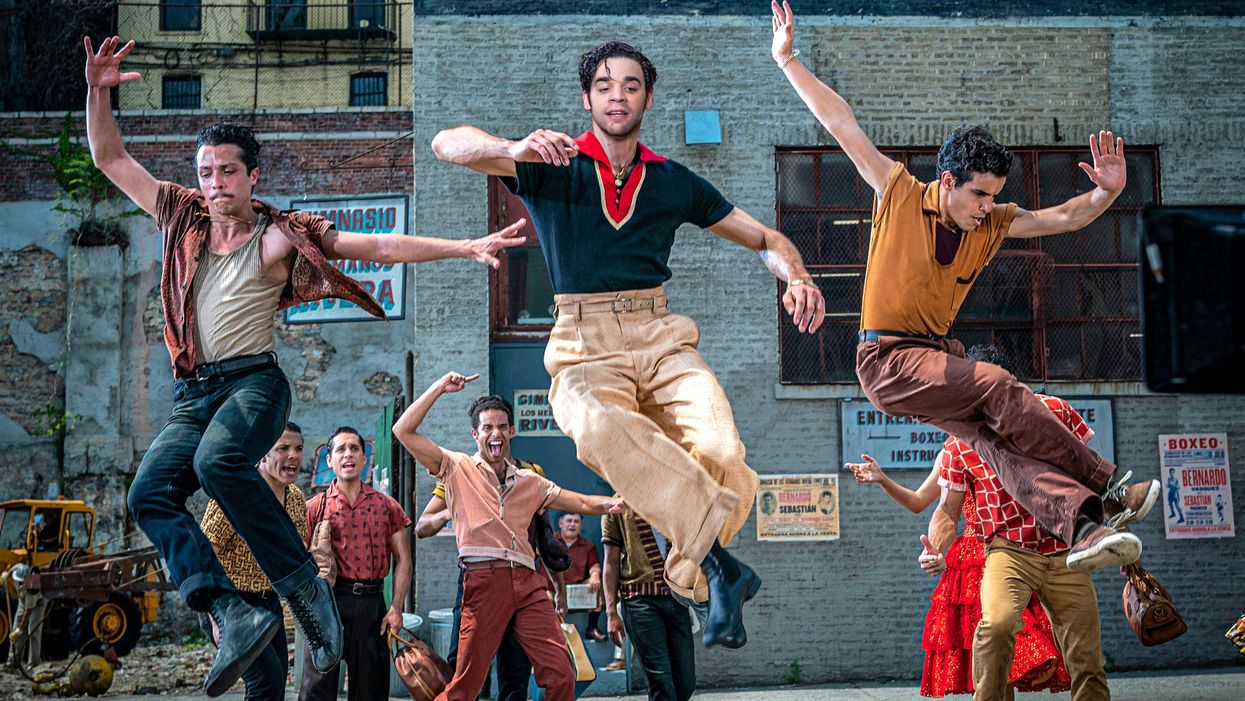From Billy Elliot to Bernardo: David Alvarez’s Journey to “West Side Story”
It was clear to anyone who saw David Alvarez in the musical Billy Elliot more than a decade ago that there was something remarkable about this teenager debuting on Broadway. Even at 14, he had a gravitas beyond his years. His dancing was both expressive and explosive—it said something about the character’s inner life, and also about his talent. You left the theater wondering what was next for this extraordinary young performer.
But, to the surprise of many, he didn’t stay in show business, despite winning a Tony for Best Actor in a Musical, along with his two fellow Billys. Instead, he disappeared from view, finished high school and then joined the army. “I wanted to be part of something bigger than myself,” he said recently of his decision to join up. “It was, no doubt, the hardest thing I’ve ever done.” He still wears his dog tags. Though he didn’t see combat, he says that the experience—the physical and mental training—changed him.
In 2015, at 20, he briefly resurfaced as a swing in the Broadway revival of On the Town. Only to disappear once again, this time winding up at Case Western University, where he majored in philosophy.
Now he’s back, in a big way, with two major debuts that place him right at the center of our cultural moment. On Showtime, he has a lead role acting in a dark, dramatic series called “American Rust,” which debuted in September. This month he will be coming to a movie theater near you in Steven Spielberg’s remake of West Side Story, the pioneering 1957 musical (and 1961 film) about warring gangs in New York City. He plays Bernardo, the charismatic, proud and sometimes violent leader of the Puerto Rican gang, the Sharks.
It’s a lot for a 27-year-old who just two years ago was an undergraduate with no plans to return to the stage. But when I ask whether working on two high-profile projects back-to-back was intimidating, he gives a characteristically low-key, thoughtful response: “You know, it’s almost as if I’ve been making sure that I’m ready and prepared for the things that are thrown at me.”
He wasn’t planning to audition for West Side Story, he says. One day, out of the blue, the casting director Cindy Tolan reached out to him on social media. “I was so confused by it,” says Alvarez. “I couldn’t understand why she was messaging me after I had disappeared from the face of the earth for the last six years.” But it turned out that she, too, remembered him from Billy Elliot.
Justin Peck created the choreography for the new film; the original was famously choreographed by Jerome Robbins. Peck recalls the audition: “He just had a spark, and this real edge to the way he moves, despite the fact that he was a little rusty.” The two worked together closely, honing Bernardo’s movement style. For his part, Alvarez was deeply impressed by Peck’s grasp of the cinematic effect of the choreography. “Everything interconnects and weaves together beautifully,” Alvarez says. “He’s choreographing for how you look within the group and how the group looks within the picture. He’s always a step ahead of where you think he is.”
Though Alvarez had to get back into dancing shape, he says the process felt natural, “almost like riding a bike.” In fact, Peck explains, the quality of his dancing helped to shape the role. “We really embraced his sense of athletic classicism,” he says. “There are some moments of virtuosity that I maybe wouldn’t have choreographed otherwise.”
What impressed everyone on set even more was his ability to go deep, in a very quiet, direct way. “He has this ability to express a total spectrum of emotions just through his eyes,” says Peck. It’s something that comes through in his performance in “American Rust,” as well, a role in which he projects a deep vulnerability, verging on woundedness. And not only in his eyes. The way he moves reveals volumes about his character’s inner life. He’s not dancing, but he’s using his body to express what’s happening inside of him.

Ariana DeBose and David Alvarez as Anita and Bernardo in Steven Spielberg’s West Side Story Niko Tavernise, Courtesy 20th Century Studios
This is a quality he has always had, certainly in Billy Elliot, but also when he was a promising young ballet student at American Ballet Theatre’s Jacqueline Kennedy Onassis School. “He was like a little adult,” remembers Franco De Vita, who was then artistic director of the school. “Incredibly focused, quiet, reserved.” And intensely talented. It was clear to his teachers that he could have become a ballet star. “We thought he was going to be the next Fernando Bujones,” says De Vita, referring to the great Cuban-American dancer of the ’70s and ’80s.
Interestingly, both of Alvarez’s recent breakout roles depict working-class men of Latin-American heritage. Bernardo is Puerto Rican, and his character on “American Rust” is half Mexican. Alvarez himself is the son of Cuban immigrants, a cancer researcher and a former actress. He says his background helped him connect to these characters’ struggles. “I’ve heard so many stories from my aunts and uncles about what it’s like to come to a new country, start from zero, with no foundation, no context, having to create that for yourself.”
It helps that, according to both Alvarez and Peck, the Bernardo character in this adaptation of West Side Story is a more complex figure than he was in the 1961 film. The new screenplay is by the playwright Tony Kushner, writer of both Angels in America, a play about the AIDS crisis, and the screenplay for the movie Lincoln.
This time, it seems David Alvarez is here to stay. He says he’s open to anything, dancing roles, nondancing roles—it’s all about translating something that comes from inside. For years, he says, he was searching for something. But recently, he has realized that it’s okay to just follow his inclinations. “There really is nothing to search for,” he says, “because everything you’re looking for is right here, right now.”




